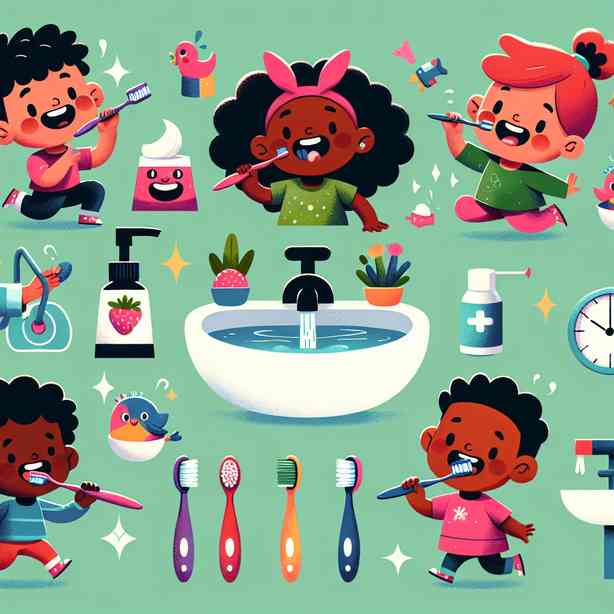
Brushing teeth is an essential part of everyday hygiene, yet many children find it to be a chore. Understanding why kids hate brushing their teeth and discovering effective alternatives can help make this daily ritual more enjoyable and less of a struggle for both parents and children. Let’s delve into the reasons behind this aversion and explore strategies that can promote a positive brushing experience.
One of the primary reasons children despise brushing their teeth is the sheer monotony of the task. For young ones, the routine can feel tedious and repetitive. They often wish to engage in play or activities that stimulate their imagination rather than taking time out to perform a seemingly dull chore. This is especially true when the process is viewed as yet another order from parents in an already structured environment full of rules and routines. To combat this feeling of monotony, parents can introduce fun and exciting elements into the brushing experience.
Incorporating games or timers can turn brushing into a more appealing activity. For instance, using a brightly colored sand timer or an app that plays a fun song for two minutes can help children feel more engaged and make the process seem less like a task and more like a game. Additionally, investing in toothbrushes that have engaging designs or characters, and flavored toothpaste can create a sense of excitement around the act of brushing. When toothbrushes become fun tools rather than mundane items, kids may be more willing to participate in the activity.
Another significant factor is the physical sensation associated with brushing. For some kids, the bristles of the toothbrush may feel uncomfortable, or they might be sensitive to strong flavors in toothpastes. This can lead to a negative association with brushing, resulting in resistance. To counteract this issue, parents should consider allowing children to choose their toothbrush and toothpaste. If children can select products that feel comfortable and taste good to them, they may be more enthusiastic about the process. Sensitivity can vary widely, so being observant to your child’s preferences and reactions is important.
Moreover, many children lack an understanding of the importance of oral hygiene, which can lead to its dismissal. Explaining why brushing is crucial for their health in an age-appropriate manner is vital. Parents can illustrate the need for brushing by discussing concepts like cavities, tooth decay, and the benefits of maintaining a bright smile. Using stories or educational cartoons that highlight other kids and their tooth care can effectively communicate the message. When children see how brushing impacts their overall health and well-being, they might change their perspective and feel a sense of responsibility toward their dental hygiene.
Additionally, instilling a habit requires consistency and patience. Young kids often require reinforcement of new habits over time. Establishing a routine that incorporates brushing twice daily, right after meals or before bedtime, can help normalize the process. Parents should actively participate during this time, brushing alongside their children to create a routine that feels collaborative rather than dictatorial. By sharing the experience, children can see brushing as a family activity, making it less likely to be viewed as a punishment.
Visual aids can also play a role in making tooth brushing fun and effective. Using a chart to track brushing habits can cultivate a sense of achievement. Kids love to see their progress and celebrate small victories, such as consistent brushing for a week or a month. Reward systems are also powerful motivators; small rewards for maintaining good brushing habits over time can promote positive behavior and encourage children to take charge of their dental care.
Another critical aspect to consider is the model parents set for their children. Children often mimic adult behavior. When they observe their parents valuing dental care—whether by brushing regularly, making appointments for check-ups, or discussing the importance of oral hygiene—they are likely to adopt similar attitudes. Demonstrating a positive relationship with oral care can significantly influence children’s feelings about brushing their teeth.
Finally, embrace creativity when available. Activities that incorporate storytelling or role-playing can make brushing more enjoyable. For instance, creating a narrative where kids become “tooth defenders,” fighting off “sugar bugs” can turn the task into an adventurous game. Engaging in imaginative play during the brushing process helps kids perceive it as less of a chore and more of an exciting mission. The goal is to create a positive environment where children feel empowered by their participation in their personal hygiene.
In conclusion, the aversion many children have toward brushing their teeth can largely be attributed to monotony, discomfort, misinformation, and lack of motivation. Parents can take a proactive approach by infusing fun and creativity into the routine while emphasizing the importance of dental hygiene. Through engaging methods, consistent habits, and positive reinforcement, children can learn to love brushing their teeth rather than loathe it. As parents continue to model good habits and involve their children in choosing their dental care tools, the experience can transform from a daily struggle into a cherished part of their routine.


